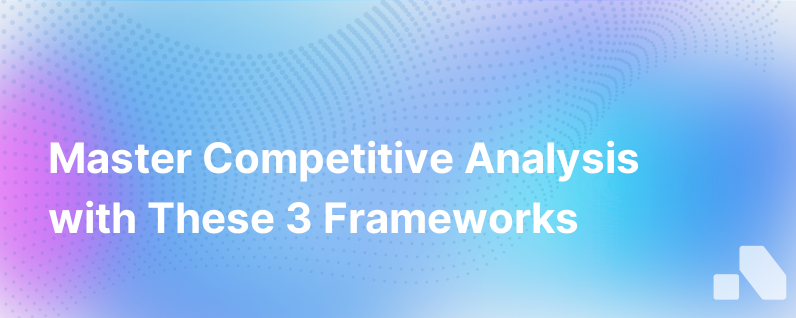
Differentiating oneself in the marketplace is a cardinal facet of contemporary business strategy. The process involves knowing your competitors just as well as you know yourself. An efficient tool for achieving this is competitive analysis, an evaluation of the strengths and weaknesses of your rivals. Here, we explore three powerful competitive analysis frameworks that can facilitate a comprehensive understanding of your competition.
1. SWOT Analysis
One of the most well-known competitive analysis frameworks is the SWOT (Strengths, Weaknesses, Opportunities, and Threats) analysis. Despite its simplicity, it's remarkably powerful and can offer a plethora of revelations about both your competition and your own business.
Strengths: This dimension deals with your competitors' core competencies. This could range from a robust brand reputation to a comprehensive product portfolio.
Weaknesses: Where does your competitor falter? Identify areas lacking performance, be it poor customer service, weak online presence, or outdated technology.
Opportunities: Have they tapped into all markets? Are there trends that they are not currently exploiting? Recognizing such opportunities can inspire innovation in your own strategy.
Threats: From rising raw material costs to potential unfavorable governmental regulations, understanding threats can assist you in planning for similar challenges.
Although this analysis provides valuable insights into your rivals' strategic position, remember to conduct a SWOT analysis for your own business as well - understanding your own strengths and vulnerabilities is just as crucial.
2. Porter's Five Forces
Porter's Five Forces, proposed by Michael E. Porter, is another powerful tool for understanding your position in the market landscape. It provides a detailed picture of the industry’s competitive structure, focusing on the following areas:
Bargaining Power of Suppliers: This force considers the control suppliers exert over prices and quality. Fewer suppliers often mean more powerful suppliers, which can pose a threat to businesses.
Bargaining Power of Buyers: Similar to supplier power, this dynamic explores the influence of buyers, revolving around their demands about price and quality.
Competitive Rivalry: This force relates directly to competition. High rivalry can often pose a threat, especially in markets with numerous competitors offering similar products.
Threat of New Entrants: The easier it is for new companies to enter the market, the more an established company's position could be significantly weakened.
Threat of Substitutes: This concentrates on the risks posed by alternative products or services. The higher the chance of customers finding another way to do what you do, the more your competitive position may be weakened.
Together, these five forces can inform a robust understanding of the competitive market dynamics and hence lead to enhanced strategizing.
3. The Comparative Market Analysis (CMA)
Used most often in real estate but applicable across diverse business sectors, the Comparative Market Analysis (CMA) primarily concentrates on pricing strategies.
By comparing the prices of similar products in the market— focusing on those recently sold, currently for sale, and even those that failed to sell— a company can discern a pricing "sweet spot". This balance ensures the product isn't selling for too low (eroding profit margins) or too high (potentially discouraging customers).
However, it doesn't end at price comparison. Along with the price, other features of the product or service are analyzed, such as quality, image, after-sales service, etc. It's about decoding what benefit the customer derives from buying the product at a particular price and why.
Leveraging Analysis with AI
While competitive analysis is crucial, it can be quite laborious and time-consuming. However, with the leverage of AI and automated solutions like Aomni, this process can be both simplified and more efficient.
By providing real-time insights into your market and competition, Aomni allows you to stay one step ahead. This data-driven approach provides vital inputs for SWOT, Porter's Five Forces, and Comparative Market Analysis frameworks at a fraction of the resources conventionally required.
Final Thoughts
In the face of dynamic market landscapes and intensifying competition, an in-depth comprehension of one's competitors is crucial. Implementing frameworks like SWOT, Porter's Five Forces, and Comparative Market Analysis could be instrumental in crafting a more enlightened strategy. These methods, along with the power of AI, present an advantageous amalgamation of competitive intelligence that could propel a company to new pinnacles of success.